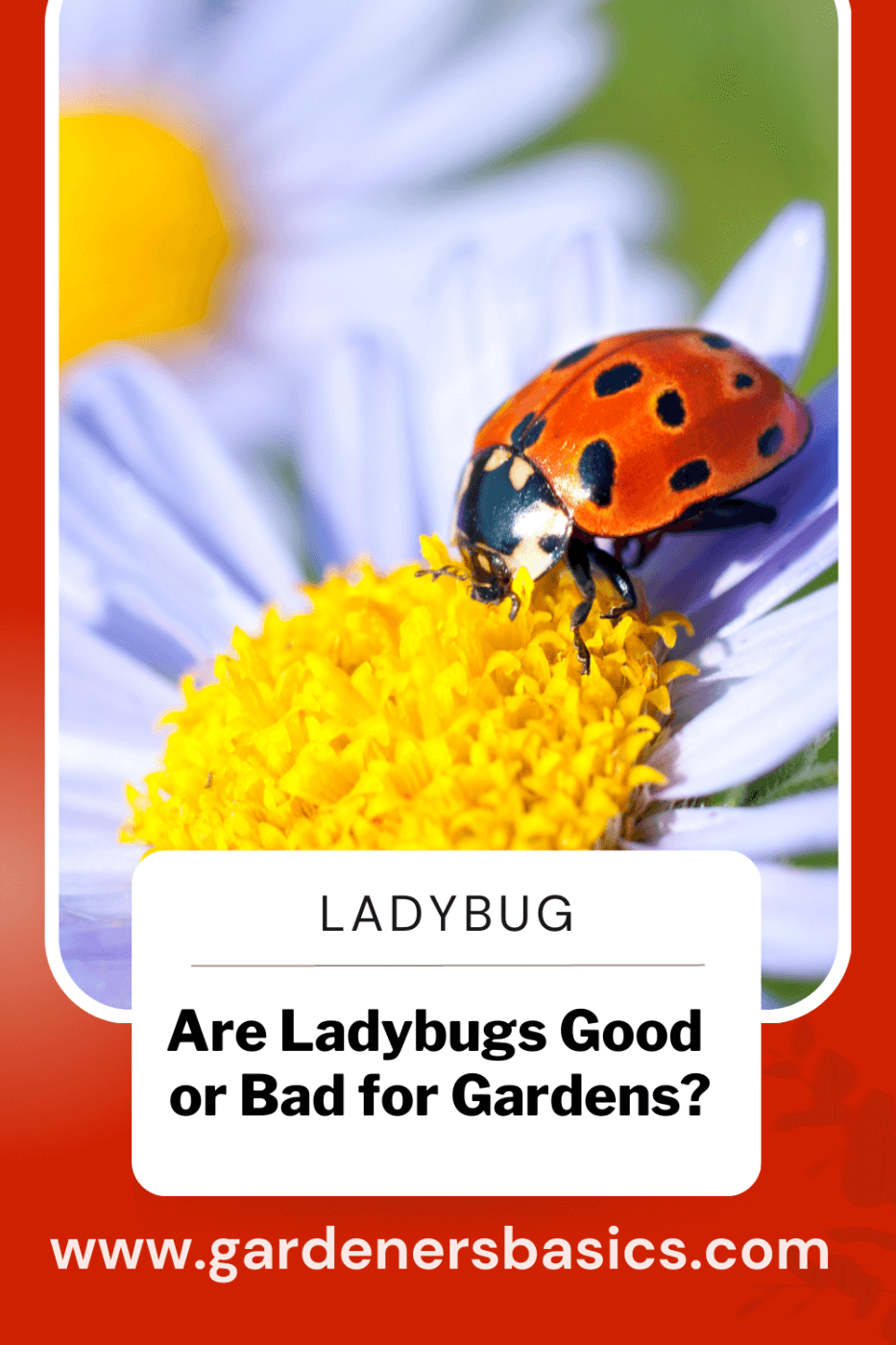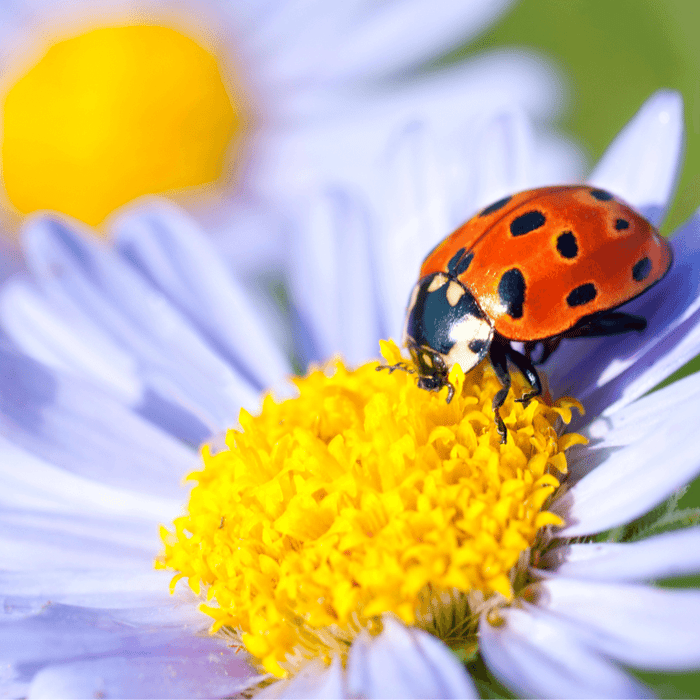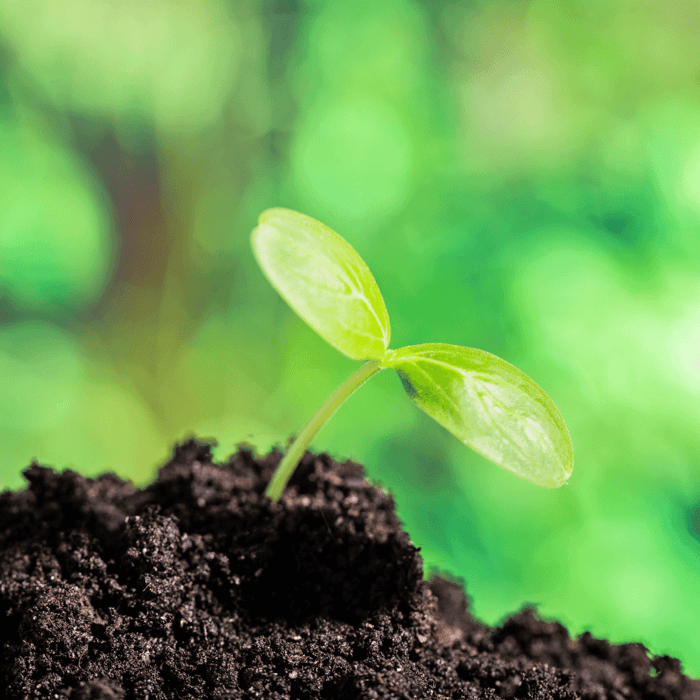The Garden's Best-Kept Secret: The Benefits of Ladybugs
Have you ever noticed a small, bright red and black spotted insect crawling around your garden? If you have, have you wondered if ladybugs are good for your garden?
Ladybugs are not just cute little creatures that look pretty on flowers but also gardeners' best friends. In this article, I will give you an overview of ladybugs and their role in the garden, explain why they are essential for your garden's health, and offer tips on attracting them to your yard.
Brief Overview of Ladybugs and Their Role in the Garden
Ladybugs are also known as ladybirds or ladybeetles. They belong to the family Coccinellidae, which includes over 5,000 species worldwide. These insects range from less than 1 mm to 10 mm long and come in various colors, such as red, orange, yellow, pink, brown, and black.
However, the most common species found in gardens is the seven-spotted ladybug or Coccinella septempunctata. Ladybugs have two stages of development: larvae and adult.
The larvae hatch from eggs laid by female adults on plants infested with aphids or other soft-bodied insects. Once hatched, they feed on these pests until they grow into full-sized adults within three to four weeks.
As adults, ladybugs continue feeding on aphids while mating and laying eggs. During cold seasons or when food sources become scarce during hot summers, ladybugs will hibernate en masse under tree bark or stones until favorable conditions return.
Thesis Statement: Why Ladybugs Are Essential For Your Garden
Now that we've covered what a ladybug is, let me tell you why these lovely creatures are essential for your heirloom garden's health. Ladybugs are natural predators that feed on aphids, mites, mealybugs, whiteflies, and other soft-bodied insects that are harmful to plants. By eating these pests, ladybugs help to keep their populations in check and prevent them from causing damage to your garden.
Moreover, unlike pesticides that harm not only the pests but also the beneficial insects in your garden, ladybugs are a safe and organic solution to pest control. They won't harm your plants or other creatures living in your garden.
In fact, they can even help with pollination as they feed on nectar from flowers. So if you want a beautiful and healthy garden without resorting to harmful chemical solutions, make sure you have plenty of ladybugs around.
But how do you attract them? Stay tuned for the next section, where I'll give tips on bringing these little wonders into your yard!
Ladybug Basics
Description of Ladybugs' Physical Appearance
Ladybugs are one of the most recognizable insects in the world. They have a distinctive red and black spotted body that is round, making them look like tiny, polka-dotted balls.
But don't let their cute appearance fool you; they are fierce predators when protecting your garden. Their coloration is not just for show.
It serves as a warning to potential predators that they are toxic and should be avoided. The spots on their back vary from species to species, but the most common ones have seven black spots on their bright red wings.
Ladybugs are also small, usually between 1/4" to 3/8" long. Despite their tiny size, ladybugs can consume up to 50 aphids daily!
Explanation of Ladybugs' Life Cycle
The life cycle of a ladybug consists of four stages: eggs, larvae, pupae, and adults. The female ladybug lays her eggs on the underside of leaves near food sources such as aphid colonies.
The yellow or orange eggs hatch into larvae within three to five days. The larvae look nothing like adult ladybugs and can be mistaken for other types of insects, such as caterpillars or spiders.
They have elongated bodies with spines or spikes, typically black or gray with orange or yellow markings. After two weeks of feeding on aphids and other small insects, the larvae pupate into adults by attaching themselves to leaves or twigs using silk-like threads they produce themselves.
Within five days, the adult ladybug emerges from its cocooned state with soft wings that harden over time. Once fully developed, adult ladybugs mate and lay their eggs before beginning the cycle anew.
The Benefits of Ladybugs in Your Garden
Natural Pest Control
If you're a gardener, you know that pests can wreak havoc on your plants. Aphids, mites, and other harmful pests can damage plants by sucking their sap or chewing on their leaves.
But fear not! Ladybugs are here to save the day.
These tiny little beetles are natural predators of many common garden pests. They have an insatiable appetite for aphids, notorious for attacking rose bushes and other flowering plants.
They also eat mites, whiteflies, and even small caterpillars. Not only do ladybugs eat these pesky critters, but they also help control their garden populations.
When they're not busy munching on aphids, they lay their eggs on leaves near areas where pests are present. When the eggs hatch into larvae, they immediately feed on the pests.
Pollination Assistance
Did you know that ladybugs also help with pollination? Most people think of bees as the garden's primary pollinators, but ladybugs also play an important role.
Ladybugs feed on nectar from flowers just like bees do. As they fly from flower to flower searching for food, they inadvertently transfer pollen from one flower to another.
This helps ensure that plants reproduce and produce fruit. But wait!
There's more! Ladybugs also assist in the pollination process by creating tiny vibrations when they land on flowers.
These vibrations help loosen pollen so it can be more easily transferred from one plant to another. So not only do ladybugs provide natural pest control for your garden, but they also help ensure that your plants reproduce and produce bountiful yields.
Attracting Ladybugs to Your Garden
Now that you know how beneficial ladybugs can be for your garden, you're probably wondering how to attract them. The good news is that it's actually quite easy.
Ladybugs are attracted to gardens that provide a good source of food and shelter. You can plant flowers high in nectar, such as daisies, marigolds, and yarrow, to attract them.
You can also plant herbs like dill and cilantro, which ladybugs love to eat. In addition to providing food sources, you can also create shelter for ladybugs by providing places for them to hide during the day.
Ladybugs like to hide in clusters under leaves or in crevices. You can create hiding spots by adding rocks or pieces of bark to your garden.
Ladybugs are not just cute little insects but incredibly beneficial for your garden. They provide natural pest control by eating aphids, mites, and other harmful pests that can damage plants. They also assist in pollinating by feeding on nectar from flowers and creating tiny vibrations that help loosen pollen.
By attracting ladybugs to your garden with a good food source and shelter, you'll create an environment that fosters natural pest control and helps ensure bountiful yields from your plants. So next time you see a ladybug crawling around your garden, thank it a little - it's doing important work!
How to Attract Ladybugs to Your Garden
Plant the Right Flowers
To attract ladybugs to your garden, you must plant the right flowers. Ladybugs love plants that produce nectar and pollen, such as marigolds, sunflowers, and daisies. By planting various flowers in your garden, you'll create an environment perfect for ladybugs to thrive in.
But don't stop there! It's also important to avoid using pesticides on your plants.
Pesticides can harm ladybugs and other beneficial insects in the garden. Instead, focus on natural methods of pest control such as companion planting or introducing other beneficial insects like lacewings or praying mantis.
Create a Habitat for Ladybugs
Another way to attract ladybugs to your garden is by creating a habitat specifically for them. This can be done by setting up small piles of sticks or leaves around your garden.
Ladybugs love hiding in these cozy spaces during the day when they're not actively hunting pests. It's also important to provide a source of water for the ladybugs.
You can do this by placing shallow dishes filled with water around your garden. Make sure to change the water every few days so it doesn't become stagnant and attract mosquitoes.
Purchase Ladybugs
If all else fails, you can purchase ladybugs online or from a local nursery and release them into your garden. While this method may seem less natural than attracting them, it can be effective if done correctly.
When purchasing ladybugs, ensure they are native species and not imported from another region. Imported species can damage local ecosystems if released into the wild.
Conclusion Are Ladybugs Good for Your Garden
If you want a healthy and thriving garden, inviting ladybugs is one of the best things you can do. Not only do they control pest populations, but they also help with pollination and add a touch of whimsy to your garden. The key to attracting ladybugs is creating an environment welcoming and supportive of these beneficial insects.
You'll be on your way to a garden full of happy ladybugs by planting the right flowers, providing habitat, and avoiding pesticides. So embrace the ladybug, and let it work its magic in your garden!
 Frequently Asked Questions (FAQ) Are Ladybugs Good for Your Garden
Frequently Asked Questions (FAQ) Are Ladybugs Good for Your Garden
1. Are ladybugs really good for my garden?
Yes, ladybugs are beneficial insects for your garden. They're natural predators of common garden pests such as aphids, mealybugs, mites, and scale insects. Their presence can help maintain a healthy balance in your garden ecosystem.
2. Do ladybugs eat plants?
No, ladybugs do not eat plants. They are carnivorous insects that primarily consume plant pests, which makes them great allies for gardeners.
3. How can I attract ladybugs to my garden?
You can attract ladybugs to your garden by planting flowers and herbs that produce pollen and nectar they enjoy, such as dill, fennel, cilantro, yarrow, and marigold. Avoiding the use of pesticides also makes your garden more attractive to ladybugs.
4. Do ladybugs pose any threats to my garden?
Generally, ladybugs are harmless to most plants in your garden. However, they can sometimes become a nuisance if their population grows too large, especially the non-native species, such as the Asian lady beetle.
5. Can I buy ladybugs for my garden?
Yes, you can buy ladybugs from many garden centers or online. However, it's worth noting that there's no guarantee they will stay in your garden after release. It's often better to create a garden environment that naturally attracts them.
6. What should I do if ladybugs infest my house?
If ladybugs infest your home, gently collect and release them outside. Sealing gaps around doors and windows can help prevent them from entering your house.
7. How can I identify a ladybug?
Ladybugs are small, round, brightly colored insects, usually red or orange with black spots. There are several species, and their appearance can vary.
8. Are all ladybugs beneficial to the garden?
Most ladybugs are beneficial due to their predatory nature, but some species, like the Mexican Bean Beetle and the Squash Lady Beetle, can harm certain plants.
9. What is the lifecycle of a ladybug?Ladybugs undergo four stages in their life cycle: egg, larva, pupa, and adult. The larvae, which look like tiny black alligators, are especially voracious eaters of aphids and other garden pests.
10. Do ladybugs bite?
Ladybugs are generally not aggressive towards humans, and their primary food sources are plant-eating pests. However, when disturbed or threatened, they can bite. Their bites are not poisonous or seriously harmful but might cause minor irritation or itchiness.
11. Can ladybugs help with indoor plants?
Yes, ladybugs can be used to control indoor plants, as they eat common indoor plant pests like aphids and mites. However, they may not stay on indoor plants for long as they are naturally inclined to fly and explore.
12. Do ladybugs carry diseases?
Ladybugs do not carry diseases harmful to humans or pets. They are safe and beneficial insects to have in your garden.
13. How long do ladybugs live?
On average, a ladybug lives between 1 to 2 years. The lifecycle from egg to adult typically takes 4 to 7 weeks, depending on the species and environmental conditions.
14. How can I make a ladybug-friendly habitat in my garden?
To create a ladybug-friendly habitat, plant various flowering plants, especially those that attract aphids, their favorite food. Providing a source of water and avoiding harmful pesticides will also help make your garden a friendly home for ladybugs.
15. Are there any natural predators of ladybugs?
Ladybugs have natural predators, including birds, frogs, wasps, spiders, and dragonflies. Their bright colors are a form of warning to predators about their unpleasant taste.







